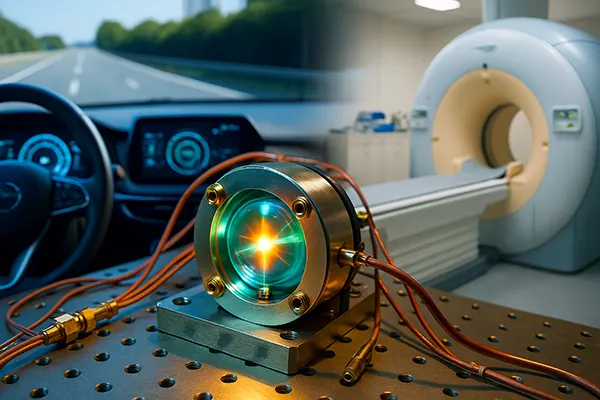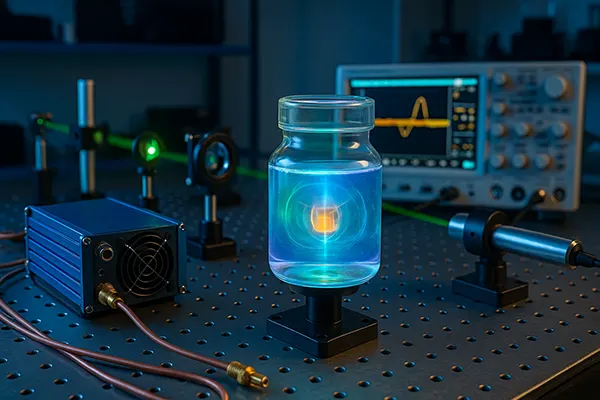
Quantum Sensors: Transforming Medicine and Transportation
Quantum sensors represent one of the most advanced technological innovations of the 21st century. Based on quantum mechanics, these devices detect the smallest changes in magnetic, gravitational, or electric fields with extraordinary precision. In 2025, their applications are reshaping how we diagnose diseases, navigate vehicles, and monitor critical systems in real time.
The Science Behind Quantum Sensors
Quantum sensors operate by exploiting the quantum properties of atoms, ions, or photons. Unlike traditional sensors, they can measure phenomena at the atomic level, which allows scientists to capture extremely accurate data. This capability has opened up new opportunities in physics, medicine, and engineering.
One of the key principles behind quantum sensing is superposition — a state where particles can exist in multiple positions at once. This enables sensors to detect variations that were previously unmeasurable with classical instruments. For example, quantum magnetometers can register magnetic field changes smaller than a femtotesla.
As research progresses, the miniaturisation and stability of these sensors are improving. Start-ups and research institutions across Europe and Asia are now integrating quantum sensors into portable medical devices and autonomous vehicle systems.
Technological Advancements in 2025
By 2025, quantum sensors have reached a new stage of commercial readiness. The latest models use nitrogen-vacancy centres in diamonds, which allow for highly stable magnetic readings without the need for cryogenic cooling. This breakthrough has significantly reduced production costs and increased accessibility for medical and industrial use.
Government-funded projects in the United Kingdom and Germany have begun testing quantum gravimeters for underground mapping and infrastructure safety. These instruments detect density variations beneath the Earth’s surface, offering engineers critical information about potential sinkholes or structural weaknesses.
Additionally, quantum-enhanced gyroscopes are being introduced into next-generation aircraft and submarines. These navigation tools operate independently of GPS, making them resistant to signal interference and cyberattacks — a vital factor for both commercial and defence applications.
Revolutionising Medical Diagnostics
In medicine, quantum sensors have become a game-changer for diagnostics and patient monitoring. Hospitals and research laboratories are already adopting quantum magnetic resonance imaging (qMRI), which delivers higher-resolution scans compared to conventional MRI systems. This means doctors can identify tumours, neurological disorders, and cardiovascular issues at earlier stages.
Quantum biosensors are also transforming personalised medicine. These ultra-sensitive devices detect minute concentrations of biomarkers — molecules that signal diseases like cancer, Alzheimer’s, or diabetes — long before symptoms appear. Early trials in the European Union indicate that quantum biosensors may reduce false-negative diagnostic rates by up to 40%.
Beyond hospitals, wearable quantum devices are beginning to appear in clinical testing. These compact sensors can continuously monitor vital signs with unprecedented accuracy, allowing real-time health tracking for patients with chronic conditions.
Ethical and Practical Challenges
Despite their potential, quantum sensors present several challenges. The first is calibration — maintaining accuracy in different environmental conditions requires advanced control systems and periodic recalibration. Researchers are developing self-correcting algorithms to address this issue.
Data privacy is another major concern. As quantum sensors gather more precise biological and environmental data, regulators in the UK and the EU are establishing strict frameworks to ensure ethical handling of sensitive information. Compliance with the General Data Protection Regulation (GDPR) remains a priority.
Finally, integrating quantum sensors into existing healthcare and transport infrastructures demands significant investment and skilled personnel. Universities are responding by expanding academic programmes in quantum technologies to meet the growing demand for experts.

Quantum Sensors in Modern Transportation
The transport sector has quickly recognised the value of quantum technology. Automotive manufacturers and aerospace companies are testing quantum-based accelerometers and gyroscopes to enhance navigation accuracy. These systems provide exact positioning even in tunnels, underwater routes, or areas where GPS is unavailable.
Quantum gravimeters are also being employed to improve the safety of railway and road networks. By detecting shifts in underground structures, they help predict landslides and prevent costly damage to infrastructure. In 2025, several European pilot projects are already demonstrating significant improvements in safety management.
Moreover, quantum sensors enable more efficient fuel usage and emission control. With ultra-precise motion data, transport companies can optimise routes and maintenance schedules, contributing to sustainability goals and carbon neutrality initiatives.
The Future Outlook
As governments continue to invest in quantum research, the integration of these sensors across industries is inevitable. The UK’s Quantum Technologies Programme and the European Quantum Flagship are leading global innovation, with billions allocated for commercial deployment by 2030.
Experts predict that by 2035, quantum sensors will become as common as GPS modules are today. Their impact will extend beyond medicine and transport to include agriculture, environmental monitoring, and climate research.
Ultimately, the development of quantum sensors symbolises a new era of precision technology — one where data accuracy directly enhances human wellbeing, industrial safety, and environmental sustainability.
